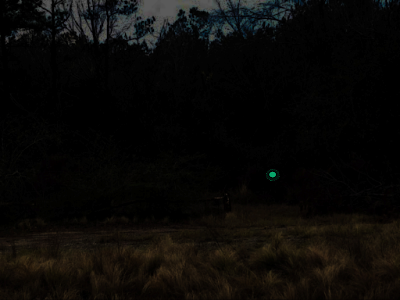 |
| Former Sheep Island Road |
This article is for all residents of Summerville who remember and experienced the famous Summerville Light of Sheep Island Road—locally dubbed Light Road. Over the years, I’ve
written articles about this ghostly phenomenon, and it remains the most popular and beloved ghost story in Summerville’s history. I received over 16,000 responses from readers who recounted their personal experiences with the Light, and a few who were skeptics—though they were overwhelmingly in the minority.
Legend has it the Light is the glow of a lantern guiding the ghost of a woman searching for her decapitated husband along a stretch of railroad tracks that once ran near Sheep Island Road.
Several theories have been proposed as scientific explanations for the Light and its unsettling physical effects—terrorizing motorists by violently shaking cars or inexplicably cutting power to their vehicles. Theories range from swamp gas and ball lightning to headlights reflecting off various road signs.
On Monday morning, July 14, the United States Geological Survey had confirmed reports of an earthquake in the Summerville area. Data from the USGS confirmed that an earthquake of about 2.2 to 2.4 magnitude occurred just before 10 a.m., about a mile east-northeast of the town center of Summerville near Berlin G. Meyers Parkway in Dorchester County. It had a depth of between about 3 and 5 miles, though officials are still working to narrow down the exact measurements of the quake based on the data received from several tools. This is not uncommon occurrence.
At this point, you may be wondering what the Monday earthquake has to do with the Summerville Light. Surprisingly, it may have a connection with another famous Summerville event that occurred in 1886, The Great Charleston Earthquake. A seismologist has offered these natural events as a scientific explanation for the floating orb: a phenomenon called, earthquake lights. Susan Hough of the United States Geological Survey published her earthquake idea in a research article late last month in Seismological Research Letters.
An article in the Smithsonian Magazine explained it this way, "Earthquake lights are mysterious phenomena that have been observed around the world, but scientists still don’t have a clear idea of what causes them. Some have proposed that seismic activity deforms minerals in the Earth, creating an electrical charge that can lead air molecules to glow. Another theory is that they’re related to the release of gases like radon or methane, which can ignite when they're exposed to a spark of static electricity. Hough believes the railroad tracks, in particular, are the key to Summerville’s ghosts."
Hough said in an interview with Post and Courier, "Historically, when rail companies replaced tracks, they didn’t always haul the old track away. So, you’ve got heaps of steel out there. Sparks might be part of the story. That could explain why so many ghost stories—even beyond Summerville—involve lights over railways. When you start looking around, it turns out there's any number of ghosts wandering around railroad tracks with lanterns looking for severed heads. There’s kind of an epidemic of them."
There you have it—mystery solved. Or is it? What say you, Summerville residents of the Summerville Light era?
 |
| An Illustration |
The unstoppable freight train called progress changed the landscape around the same I-26 real estate, quite possibly closing the chapter on the era of the Summerville Light. The Nexton I-26 connector was constructed. The overpass that once led to the dark, overgrown, wooded hollow is no longer there. Only remnants of the once-haunted stretch of Sheep Island Road remain.
As you enter the Nexton Parkway exit off I-26 heading north, glance quickly to your right. You may catch a glimpse of the remaining tattered pavement. It briefly touches Sigma Drive before crossing Nexton Parkway, extending northward—parallel to the new Del Webb Community—then fading into obscurity.
It is gone, but not forgotten, as a growing Southern town 23 miles outside of Charleston reimagines itself, closing one chapter to open another.
Smithsonian Magazine article
Visit Summerville












